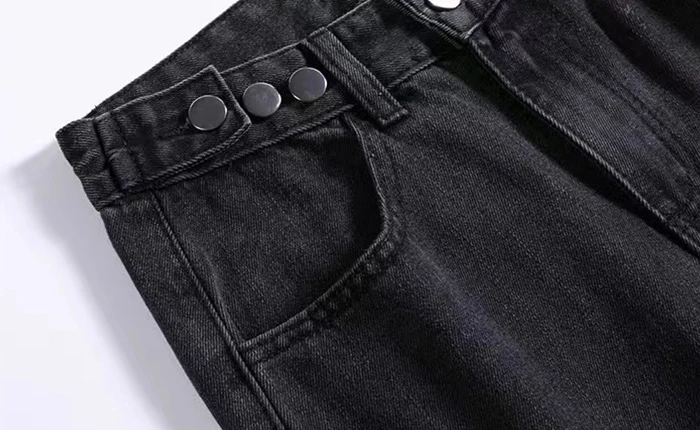indigo dye denim supplier
The Significance of Indigo Dye in Denim Production A Supplier’s Perspective
Indigo dye has played a crucial role in the evolution of denim, transforming it into one of the most sought-after fabrics worldwide. With its deep blue hue and longevity, indigo-dyed denim has become synonymous with both fashion and functionality. As a supplier of indigo dye for the denim industry, it is essential to understand the significance of this dye, the manufacturing processes involved, and the sustainable practices we must adopt to ensure a thriving future for denim production.
The History of Indigo Dye
Indigo dye is one of the oldest dyes used for textile production, with origins dating back over 6,000 years. It has been utilized for dyeing fabrics in regions such as Egypt and India, and its use spread to Europe in the Middle Ages. The introduction of indigo to the production of denim in the 19th century, particularly during the American Gold Rush, revolutionized the fabric's appeal. Denim, originally crafted for laborers, became a staple among diverse groups, from miners to fashion icons.
The Indigo Dyeing Process
The process of dyeing denim with indigo involves several intricate steps. First, the cotton fibers are treated to ensure the dye takes evenly. The dyeing process itself is known as rope dyeing or slasher dyeing, where the fabric is submerged in a vat of indigo dye. Unlike other dyes, indigo is unique in that it needs to be oxidized to reveal its rich blue color. The fabric is then exposed to air, allowing the indigo to transform into its distinctive hue.
One notable characteristic of indigo dye is that it does not penetrate the entire fiber, which results in a fading effect over time. This fading gives denim its vintage appeal and character, making each piece unique to its wearer. As a supplier, it is vital to provide consistent quality and color fastness to uphold the integrity of the denim brand.
Sustainability in Indigo Production
indigo dye denim supplier

In recent years, the denim industry has faced significant scrutiny over its environmental impact. Traditional indigo dyeing processes can be water-intensive and polluting. Recognizing this, many suppliers have begun advocating for sustainable practices. Innovations such as using natural indigo derived from plants instead of synthetic chemicals are gaining traction. Furthermore, advancements in dyeing technology have allowed for the reduction of water usage and chemicals in the dyeing process.
As a supplier, it is our responsibility to educate denim manufacturers about sustainable options available in the market. By promoting environmentally friendly practices, we are not only preserving our planet but also responding to consumer demands for sustainable fashion. The modern consumer is increasingly aware of the origins of their clothing and the impact it has on the environment. By meeting this demand, we can foster a more sustainable denim industry while also enhancing brand loyalty.
The Future of Indigo Dye in Denim
The future of indigo dye in denim looks promising, especially with the growing trend of customization and personal expression in fashion. As consumers look for more personalized experiences, the ability to offer unique shades and finishes in indigo dye will become increasingly valuable. Additionally, the rise of denim innovations such as stretch denim, eco-friendly materials, and hybrid fabrics will continue to redefine how we utilize indigo dye.
Moreover, the cultural significance of denim continues to grow. Once a symbol of labor and utility, denim has transformed into a canvas for artistic expression and individuality. Collaborations between denim brands and artists or influencers will pave the way for unique uses of indigo dye, further enhancing its cultural relevance.
Conclusion
As a supplier of indigo dye for the denim industry, understanding the historical significance, production processes, and sustainability measures is crucial to driving the industry forward. By embracing innovation and sustainability, we can ensure that indigo dye continues to thrive as a vital component of denim production. As we move into the future, our commitment to quality, environmental responsibility, and creative expression will shape the next chapter of indigo-dyed denim, appealing not only to consumers but also to the evolving landscape of fashion.
-
The Timeless Art of Denim Indigo Dye
NewsJul.01,2025
-
The Rise of Sulfur Dyed Denim
NewsJul.01,2025
-
The Rich Revival of the Best Indigo Dye
NewsJul.01,2025
-
The Enduring Strength of Sulphur Black
NewsJul.01,2025
-
The Ancient Art of Chinese Indigo Dye
NewsJul.01,2025
-
Industry Power of Indigo
NewsJul.01,2025
-
Black Sulfur is Leading the Next Wave
NewsJul.01,2025

Sulphur Black
1.Name: sulphur black; Sulfur Black; Sulphur Black 1;
2.Structure formula:
3.Molecule formula: C6H4N2O5
4.CAS No.: 1326-82-5
5.HS code: 32041911
6.Product specification:Appearance:black phosphorus flakes; black liquid

Bromo Indigo; Vat Bromo-Indigo; C.I.Vat Blue 5
1.Name: Bromo indigo; Vat bromo-indigo; C.I.Vat blue 5;
2.Structure formula:
3.Molecule formula: C16H6Br4N2O2
4.CAS No.: 2475-31-2
5.HS code: 3204151000 6.Major usage and instruction: Be mainly used to dye cotton fabrics.

Indigo Blue Vat Blue
1.Name: indigo blue,vat blue 1,
2.Structure formula:
3.Molecule formula: C16H10N2O2
4.. CAS No.: 482-89-3
5.Molecule weight: 262.62
6.HS code: 3204151000
7.Major usage and instruction: Be mainly used to dye cotton fabrics.

